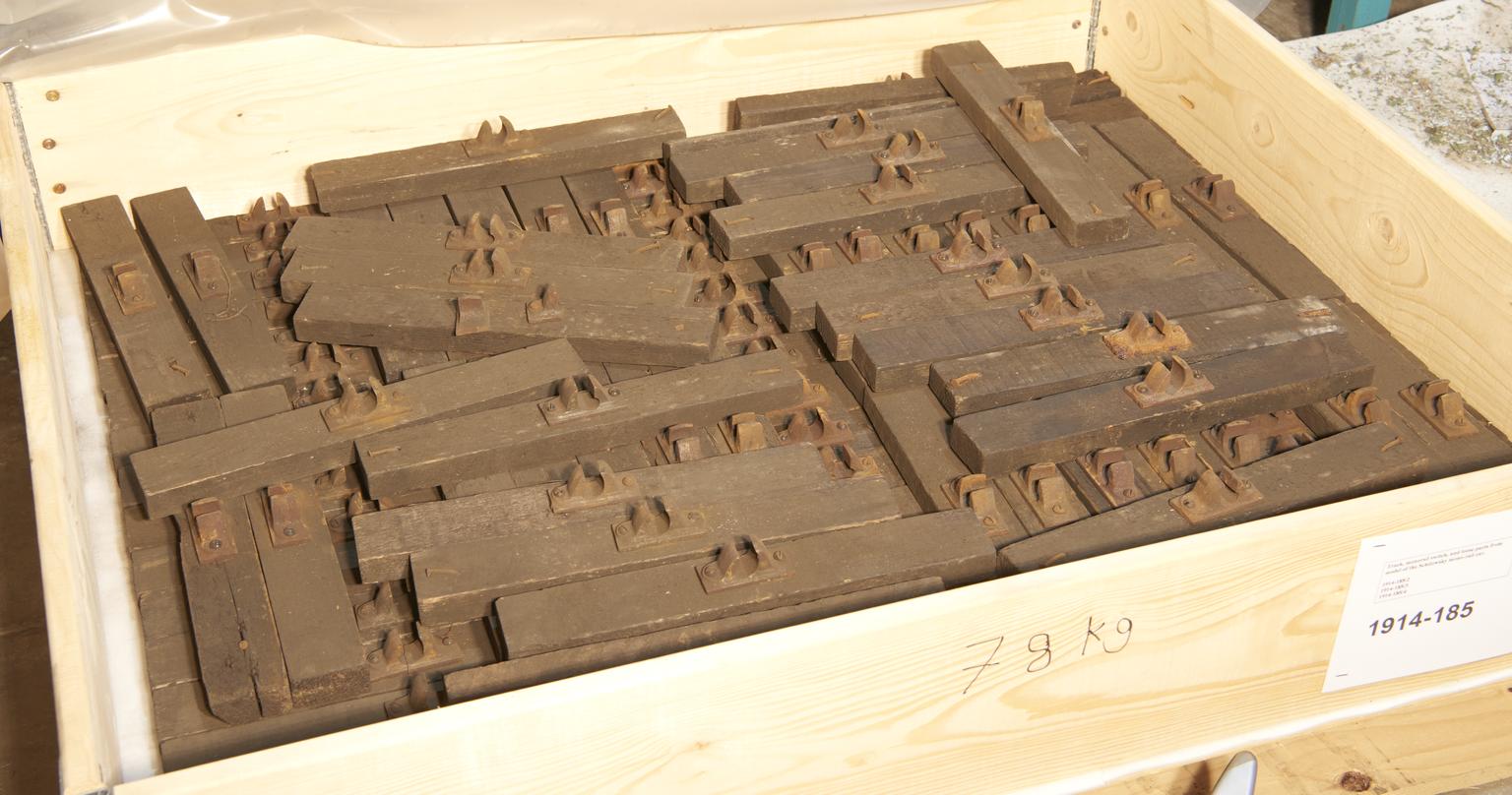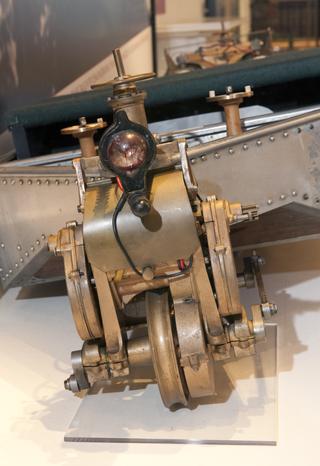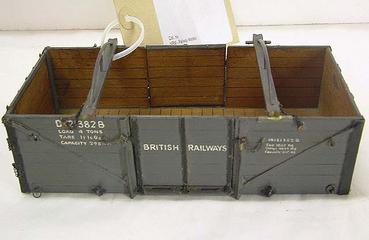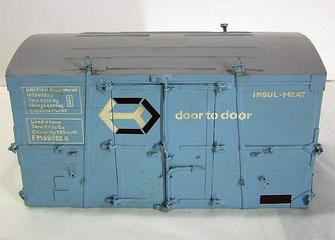Model of the Schilowsky mono-rail car
Model of the Schilowsky mono-rail car.
More
In the early years of the twentieth-century, many experimenters hoped that the gyroscope would revolutionise transport, whether on land, sea, or in the air. The inventor of the gyrostatic monorail was Louis Brennan, but His Excellency Peter Schilowsky, of Russian origin, also developed a gyrostatic monorail system that was in some ways an improvement on Brennan's. Schilowsky maintained that adopting this monorail would reduce the initial cost of rolling stock, provide track that could be constructed more cheaply, and reduce running expenses. No full-size equipment was ever completed, though the Schilowsky monorail was seriously considered by the Soviet Government in 1921 for a high-speed link between Petrograd and Gatchina.
The builder of the model is unknown, though it may have been the famous model- building firm of Bassett-Lowke Ltd. Schilowsky demonstrated this model at a meeting held at the Imperial College of Science and Technology, South Kensington, on 19 January 1914 and, in the following month presented it to the Science Museum. Schilowsky also designed a two-wheeled gyroscopic car which was successfully demonstrated in London streets in April 1914.
- Object Number:
- 1914-185/1
- type:
- monorail car and model








